FEATURES|THEMES|People and Personalities
Khandro Dorje Phagmo Rinpoche: An Ancient Legacy Manifested
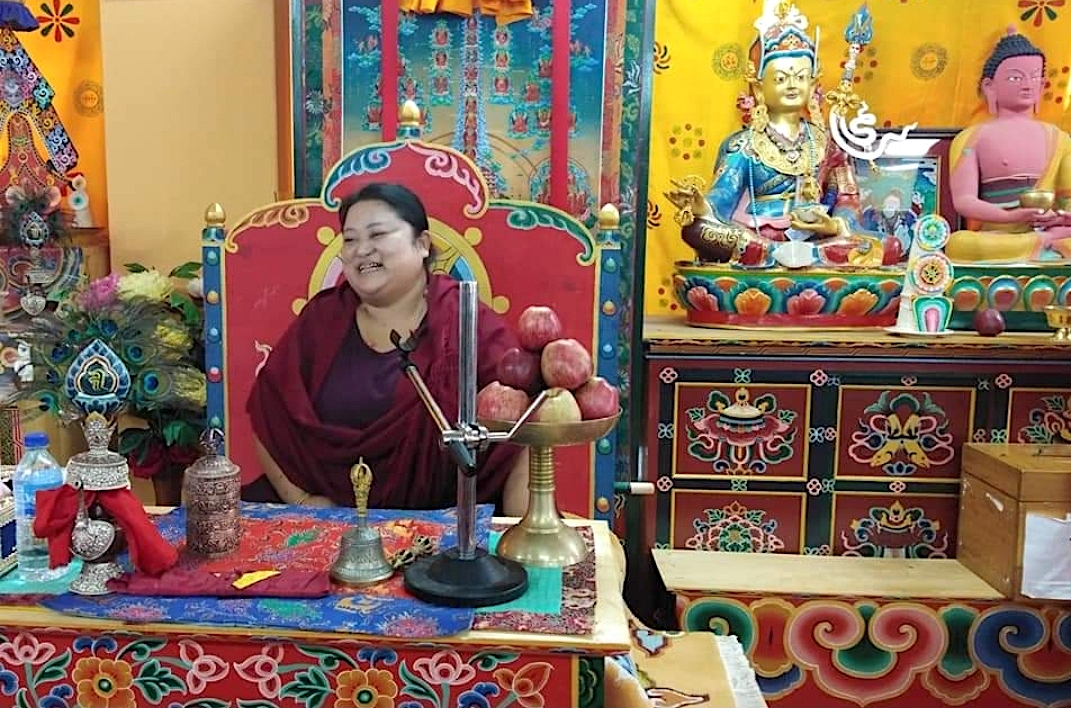
Khandro Dorje Phagmo Rinpoche. Image courtesy of the authors
Dorje Phagmo (Skt: Vajravarahi; lit: Thunderbolt Sow) is the wrathful form of Vajrayogini, known as the foremost, supreme queen of all dakinis and a divine consort of Heruka Chakrasamvara (Khorlo Demchok). She is the Samantabhadri of wisdom, activities, and accomplishments, and therefore known throughout as the “Mother to all Buddhas”—the Ultimate Refuge for all deities, practitioners, and meditators of the Buddhadharma.
A line from a prayer recited by Shakyamuni Buddha goes:
The precious and sacred womb of Vajravārāhī,
Present in it are the maṇḍala of all victorious buddhas,
Beyond union and separation upon the experience of single taste.
The five principal spiritual consorts of Guru Padmasambhava were emanations of Dorje Phagmo: Mandarava from Zahor, an emanation of body; Yeshi Tshogyal from Tibet, an emanation of speech; Sakya Devi from Nepal, an emanation of mind; Kalasiddhi from India, an emanation of quality; and Tashi Kheudren from Bhutan (known as Mon in those days), an emanation of activity.
Several reincarnations of Dorje Phagmo have been recognized in Tibet since the medieval era, the first being recognized by the mahasiddha Thangtong Gyalpo, which began the lineage of Samding Dorje Phagmo in the 15th century. In the hierarchy of Tibetan Buddhist figures, Samding Dorje Phagmo is considered the highest female incarnation.
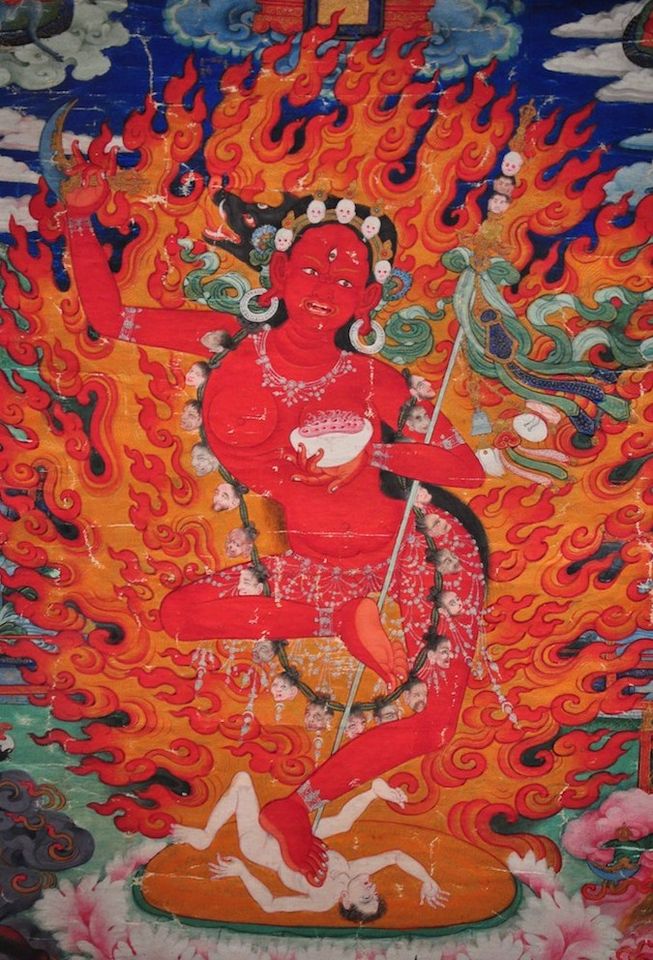
Samding Dorje Phagmo. Image courtesy of the authors
The prophecy of Lama Sonam Zangpo
The prophecy of the birth of the present incarnation of Dorje Phagmo was made by none other than the great 20th century yogi Lama Sonam Zangpo (1888–1982). In 1974, Drubthob Thangthong Gyalpo Rekey Jadrel Rinpoche shared the following prophecy with Dudjom Jigdrel Dorje Rinpoche, Dilgo Khyentse Rinpoche, Kalu Rinpoche, and other realized masters:
A baby girl, an emanation of Dorje Phagmo, will be born. She will be of great benefit to all beings but she will encounter great obstacles. If she did not meet these obstacles, her activities in the world to help all beings would be even more profound. The reason for these obstacles is that sentient beings lack sufficient merit at this time.
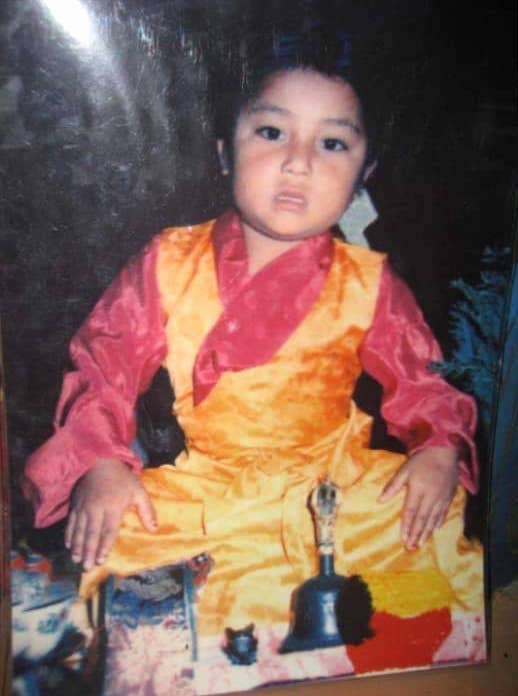
A young Khandro Dorje Phagmo Rinpoche.
Image courtesy of the authors
Dorje Phagmo today
The current incarnation of Dorje Phagmo, Farchen Zangmo, was born in the village of Kabesa in Bhutan’s Punakha District, on the full moon of the second month of the year of the Iron Monkey (1980). Her biological parents were Tandin Gyeltshen and Lhachoe Droelma. Her birth was preceded by many auspicious signs, among them her mother saw in her dream a ray of light hit the womb. The light emanated from a golden statue of Dorje Phagmo, bestowed by a monk who was believed to be a manifestation of Guru Padmasambhava.
Dorje Phagmo was born in a forest, where her mother and two cousins had taken their cattle for grazing. Her birth was welcomed by rainbows encircling the Sun and illuminating the spot where the birth took place. On the same spot, her mother and cousins described a dharlam—white clouds resembling the path of a sacred ceremonial scarf—and a sprinkle of rain, which is considered highly auspicious. A nearby small pond where she was taken to be bathed turned a milky white.
At the moment of her birth, Dorje Phagmo was found to be clean, with peculiar birthmarks and imprints all over her body. Since no one could read or understand the imprints, the child was initially assumed to be a bad omen. Some concluded that the child might be a witch or an evil spirit who could bring misfortune upon their village. Villagers even warned her parents to dispose of the baby as soon as possible. Fortunately, Dorje Phagmo’s grandfather stood firm beside her and was resolute in her defense. As she grew up, Dorje Phagmo performed miracles, which amazed the villagers and eased their earlier apprehensions.
The first important moment in her life came when the caretaker of the Royal Stable shared the news of her birth and the young girl received an audience with the fourth king of Bhutan, Jigme Singye Wangchuck (r. 1972–2006). The king, upon seeing the unique imprints on her body, told the parents that the baby bore marks resembling that of Dorje Phagmo. The parents were commanded to take good care of the child and to maintain good hygiene. They also received a soelra (a special gift) from the monarch.
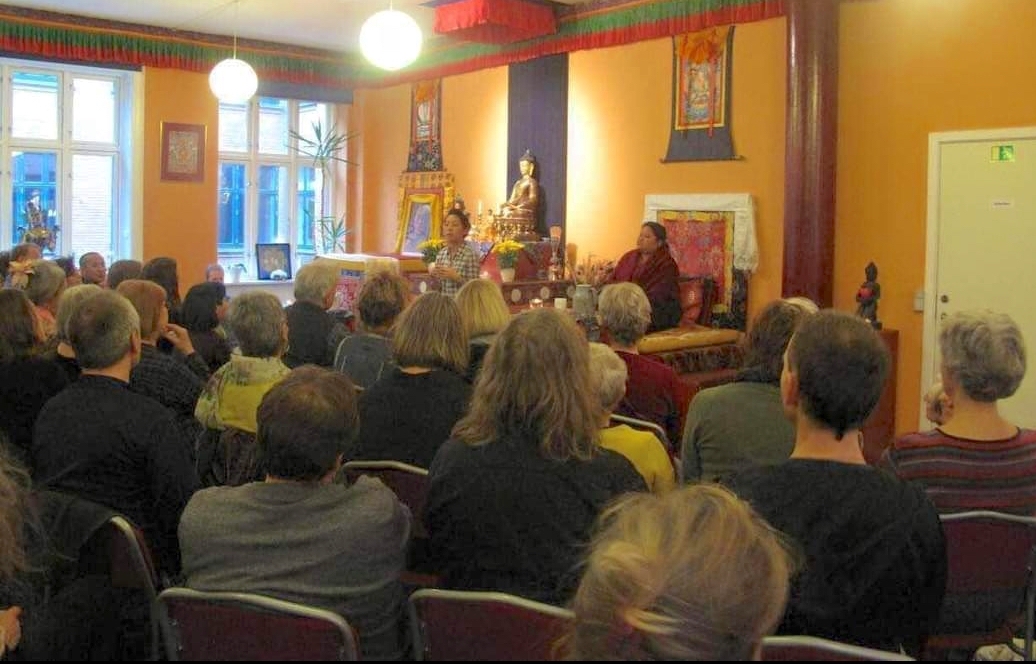
Image courtesy of the authors
Pursuing the call
When Dorje Phagmo was just 15 months old, she expressed the need to leave her biological parents and fulfill her prophesy. A teenage girl from the same village agreed to carry her to the capital, Thimphu, a place where neither had been before.
They set out from Kabesa for Thimphu on foot, a journey that requires crossing Sinchu La, a mountain pass some 3,300 meters above sea level and which normally takes two days. It has been said that the two girls were able to complete the passage in just four hours and that the guardian deities of Dorje Phagmo journeyed along with them and even carried them.
When the two children reached Langjukphakha in Thimphu, the elder girl did not know where to go. Dorje Phagmo, however, pointed to the opposite hill and asked her companion to head toward it. This is the location of the nunnery Zilukha Lhakhang, which was then under the guidance of the 16th Drubthob Thangthong Gyalpo Rekey Jadrel Rinpoche. The story also goes that a day earlier, Drubthob Rinpoche saw in a vision the arrival of Dorje Phagmo. The nuns of Zilukha Lhakhang had been ordered to arrange a ceremonial welcome for Dorje Phagmo. But rather than the expected religious figure accompanied by a retinue of attendants and disciples, they were astonished to see a young girl arrive bearing small baby.
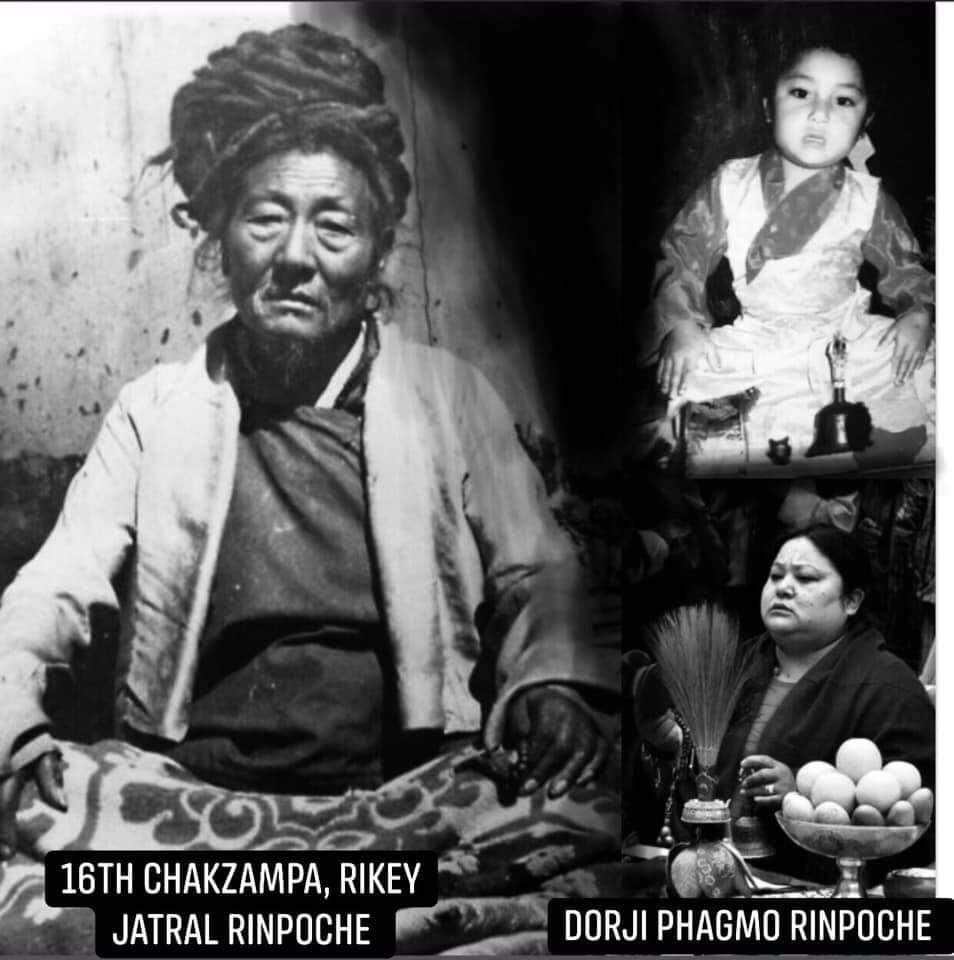
Image courtesy of the authors
Thereafter, Dorje Phagmo lived under the sacred care and protection of Drubthob Rinpoche and his consort Yum Dolkar at Zilukha Lhakhang. This became her first place of learning and Drubthob Rinpoche and Yum Dolkar were her first spiritual parents.
She received initial teachings in the Dharma, and blessings and empowerments from Drubthob Rinpoche himself. Although her identity was kept a secret, many people and especially great Buddhist masters from Bhutan, India, Nepal, and Tibet visited her after having visions and revelations of her birth. Drubthob Rinpoche named her Farchen Zangmo (Farchen: Transcendental; Zangmo: Lady of Auspiciousness).
When Dorje Phagmo was two years old, Drubthob Rinpoche passed away. Two years later, Drubthob Rinpoche’s consort, Yum Dolkar, departed Zilukha Lhakhang and thereafter Dorje Phagmo lived through a series of difficulties.
Some 18 months later, she traveled to Darjeeling in India. She was not yet six years old. There she received transmissions and studied at Sonada Gompa under Kalu Rinpoche (1905–89) for about a year. Kalu Rinpoche was a close friend of Drubthob Rinpoche and had presided over the consecration of Zilukha Lhakhang. From Darjeeling, Dorje Phagmo was taken to Nepal, where she remained for about a year, receiving further teachings from various lamas.
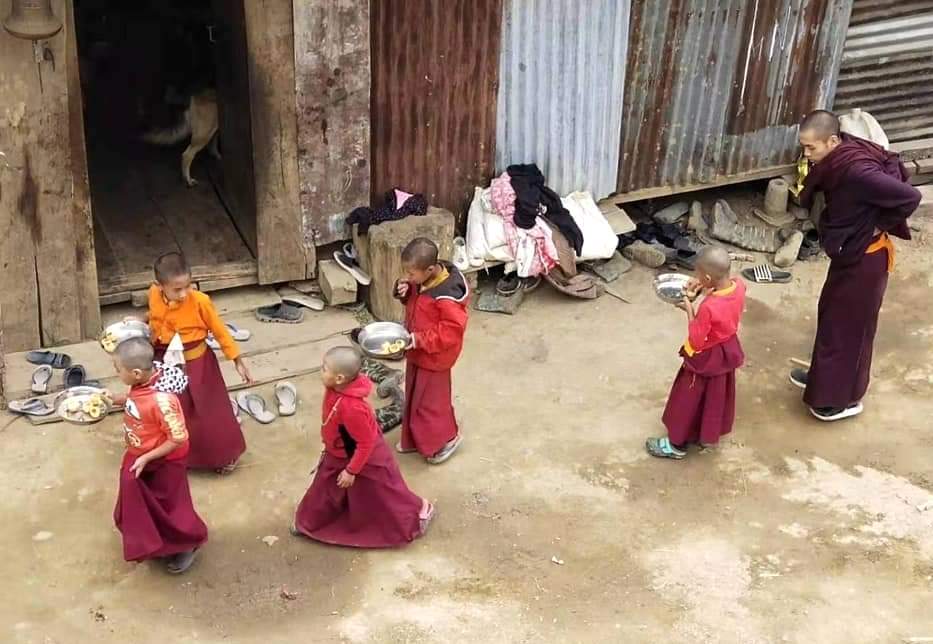
Image courtesy of the authors
At the age of eight, Dorje Phagmo was brought back to Zilukha Lhakhang at the request of some of the nuns, who retained a strong sense of devotion toward her. However, she would remain in Thimphu for just five months; on the advice of Druktruel Ngawang Khenrab and Ayang Rinpoche, she was sent to Mysore in India in 1988 to study under His Holiness Pema Norbu (known as Penor Rinpoche; 1932–2009). For 12 years thereafter, Dorje Phagmo studied at Namdroling Monastery and received every teaching and empowerment from Penor Rinpoche, who also recognized her as a true incarnation of Dorje Phagmo.
During her studies in Mysore, Dorje Phagmo was diagnosed with a form of blood cancer. The medical prognosis was not favorable: she was not expected live longer than a few months. The illness brought with it a nightmare of difficulties, witnessed by a few attendant devotees at Changidaphu (Kala Bazaar), Thimphu. Today we are all fortunate that the cancer prognosis and medical tests have proven to be incorrect.
In 2000, after completing her studies, Dorje Phagmo returned to Bhutan to spend two years in solitary retreat at Paro Tashi Chhoeling Monastery.
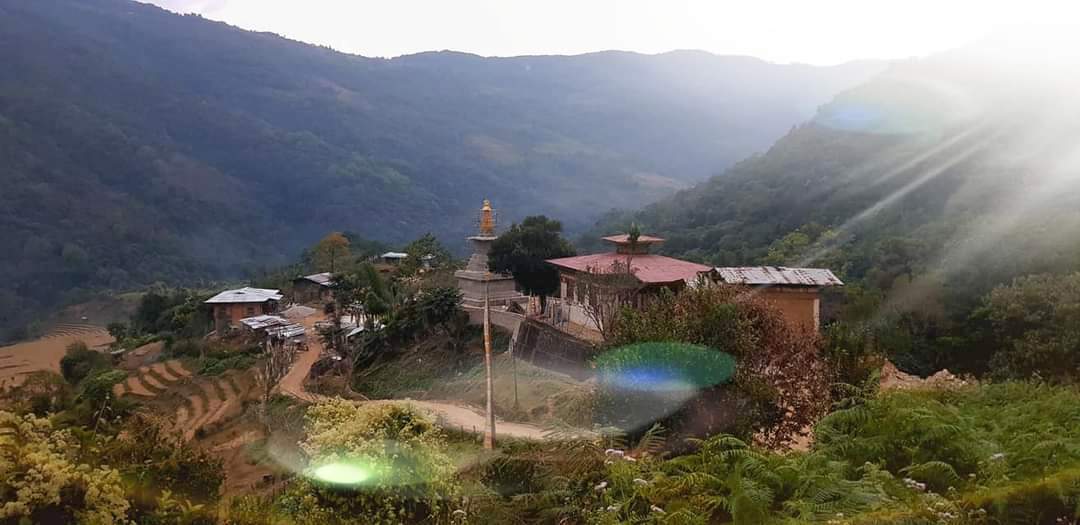
Ngajur Pemachopheling Monastery. Image courtesy of the authors
Today, Dorje Phagmo Rinpoche continues her work spreading the Dharma, spending much of her time at her monastery in Zhemgang District, with occasional visits to Thimphu to raise the necessary resources and to meet with visitors and followers.
Since returning to Bhutan, Dorje Phagmo Rinpoche has revealed and discovered numerous ter (sacred treasures), and is said to have manifested several miracles in person, such as leaving her hand and footprints on rocks, pebbles, and wooden floors, and spending nights alone practicing in places such as Buli Tsho (Buli Lake), and helping people recover from chronic illnesses. Many of her devotees have witnessed these events in person, and all of these people are living and can testify to their experiences.
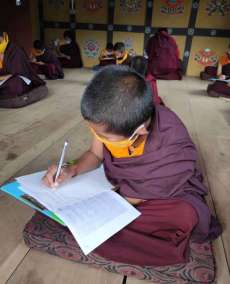 Images courtesy of the authors
Images courtesy of the authors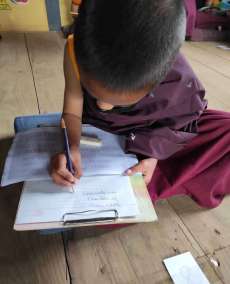
Ngajur Pema Chopheling Monastery
In 2003, following the prophecy of Khandro Mebar Tashi Kheudren, Dorje Phagmo visited Jang Aring (renamed Norgang by Bhutan’s first king, Gongsar Ugyen Wangchuck [r. 1907–26]) in Kikhar, Zhemgang District. Mebar Tashi Kheudren was the daughter of King Sindhu Raja, who invited Guru Padmasambhava to Bumthang in the eighth century.
The descendants of Norgang Ponpo offered the old ancestral manor and temple to Dorje Phagmo. The temple, Mebar Tokchoed Lhakhang, was constructed in the eighth century, at the same time as the famed Samye Monastery in Tibet. Legend has it that when the Tibetan King Trisong Detsen (r. 755–94) was building Samye in Lhasa, he was unable to make much progress because malevolent forces repeatedly destroyed it. A temple in Monyul Kikhar was suggested as one of the dokthab (antidotes) to clear the obstacles. According to local residents, this is the origin of the establishment of Mebar Tokchoed Lhakhang.
The temple became one of the main seats of Khandro Mebar Trashi Kheudren and was hence named Mebar Tokchoed Lhakhang (tokchoed literally means “highest spiritual realization”).
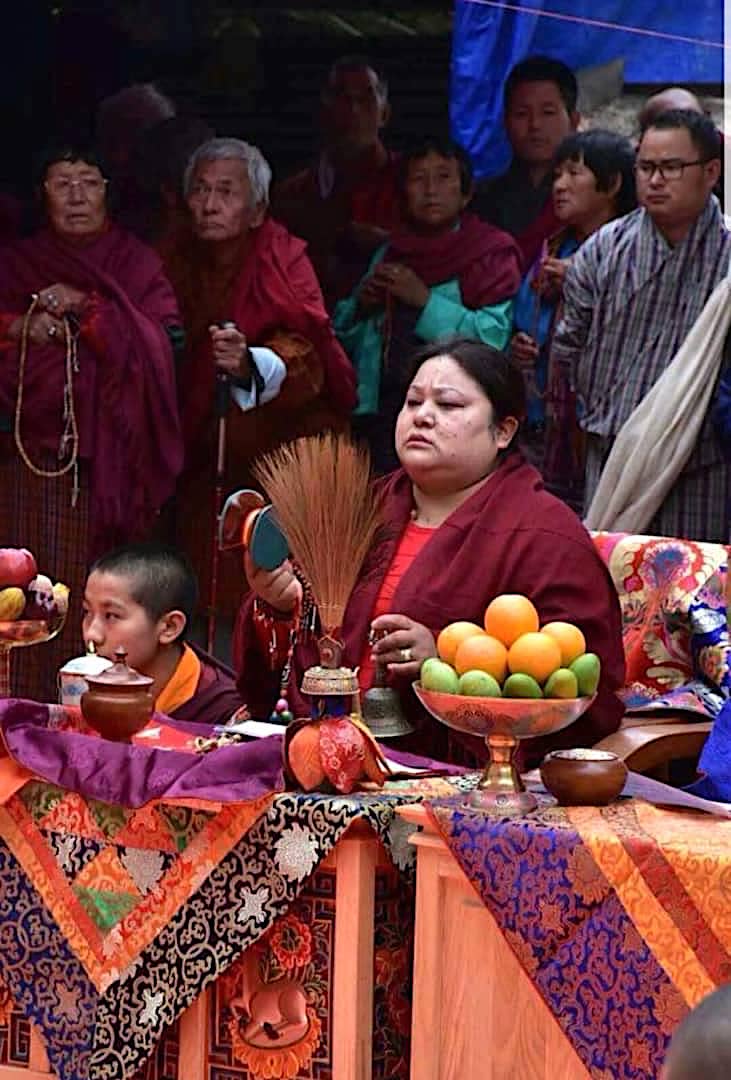
Image courtesy of the authors
Mebar Tashi Kheudren foretold that the temple would be destroyed by fire after she was gone and that that no one would be able to renovate it. However, she also said that an “accomplished woman” from western Bhutan who had attained realization would be able to return the temple to its former glory. The prophecy also mentions that a monastic school would eventually be established.
Dorje Phagmo accepted the temple and the old manor, and immediately began working on redevelopment, constructing a new temple between 2004 and 2005. The people of Kikhar pointed out that several attempts were made beforehand to maintain the temple and manor, however numerous misfortunes befell them and the lhakhang would fall back into decay and destruction. The locals believed that the right time and right person in the form of Dorje Phagmo Rinpoche were needed to carry out the renovations successfully.
Dorje Phagmo has also initiated a monastic institute, as per the prophecy, which has been named Ngajur Pema Chopheling Dratshang. Today, there are some 39 nuns and monks under Dorje Phagmo’s care.
The monastery is now home to many elderly, physically disabled, and terminally ill people as well as abandoned and orphaned children. No one has been turned away and anyone seeking the Dharma or simply a shelter to spend the remainder of their lives in prayer has been welcomed. In addition to her formal responsibilities, Dorje Phagmo personally undertakes all kinds of household work, such as washing, cooking, and serving her disciples, workers, and volunteers.
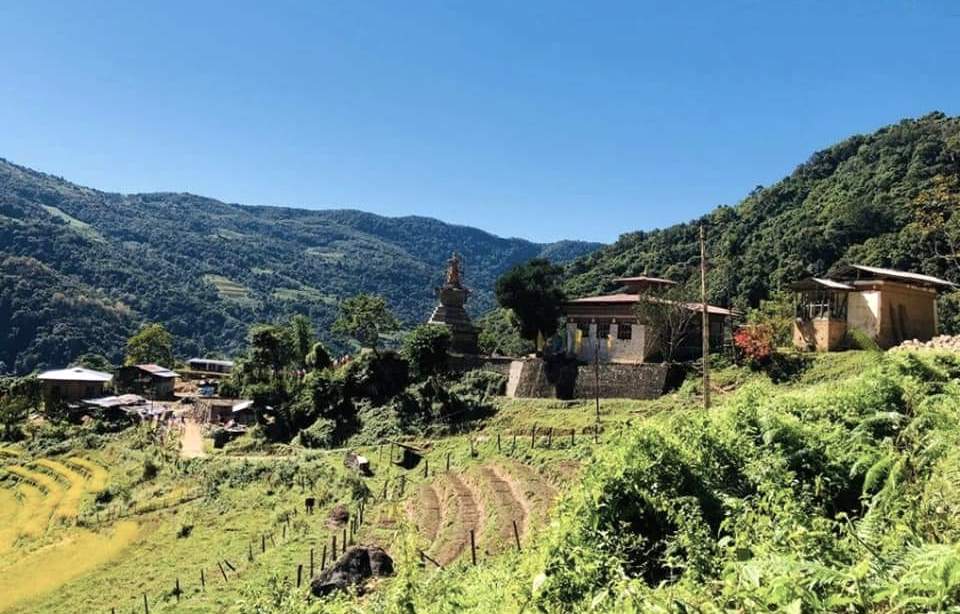
Ngajur Pemachopheling Monastery. Image courtesy of the authors
Stupa project
Dorje Phagmo also has initiated the construction of an auspicious Yundum Chorten (Stupa of Reunion/Reconciliation) inside the complex at Norgang. Besides her own vision and the prophecy from Drubthob Thangtong Gyalpo, Dorje Phagmo was advised by His Holiness Dodrupchen Rinpoche and His Holiness the Late Chatrel Rinpoche to construct the chorten.
It took several years to find reliable donors to support the project before construction work could commence in 2019. The 12-meter stupa will be first of its kind in the entire Kheng region (Kheng-rig-nam-sum). Because the stupa has been built as per an ancient prophecy, and thanks to the very sacred relics received and collected, the chorten will be one of the most important Buddhist monuments and sacred sites in the region. Already many people have begun visiting the site to contribute their time, materials, and some small offerings of money while also making merit.
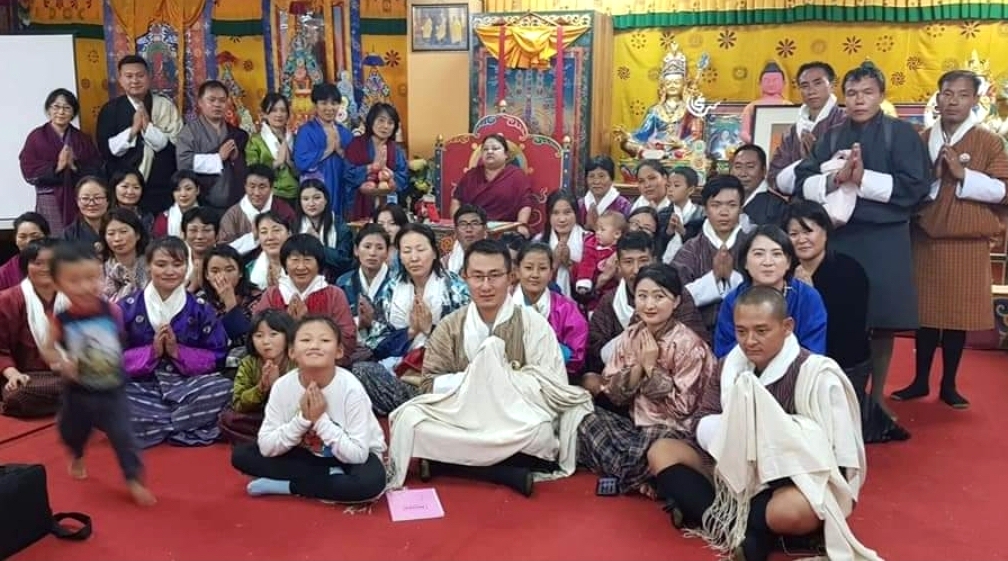
Image courtesy of the authors
Getting involved
A small working committee of devotees, all working voluntarily, have come together around Dorje Phagmo to support her and reach out to potential donors, supporters, and well-wishers. Besides the ongoing renovation of the old lhakhang and the construction of the chorten, there are plans to build proper accommodation, prayer halls, and classrooms for the nuns and monks, and living quarters for the teachers.
Support and donations of any amount to sustain this sacred project are appreciated to help complete this undertaking and fulfill the wishes of Dorje Phagmo to uphold and spread the Buddhadharma. Full details here.
About the authors
Tshering Tashi is an executive engineer with Druk Green Power Corp. in Bhutan; Ugyen Lhendup is a senior researcher with Bhutan’s Royal Research & Advisory Council; and Dorji Wangchuk is a researcher-PhD candidate at the University of Macau.
See more
Khandro Dorje Phagmo Rinpoche
Ngajur Pemachopheling Monastery (Facebook)
Related features from Buddhistdoor Global
Sing Me A Song: The Impact of Screens on a Remote Bhutanese Mountain Village
Ten Years of Empowering Female Monastics: Bhutan Nuns Foundation Extends Reach with New Training Center
Big Book, Small Kingdom
My Story: Walking the Path of a Female Monastic in Bhutan
Bhutan, the World’s Only Carbon-negative Nation, an Example of Environmental Stewardship for a Planet Grappling with Climate Change
Related news from Buddhistdoor Global
Buddhist Bhutan the First Nation to Receive Free COVID-19 Vaccines from India
Buddhist Bhutan Becomes the Latest Asian Nation to Decriminalize Homosexuality
Bhutan Nuns Foundation Counts Blessings Amid Pandemic














